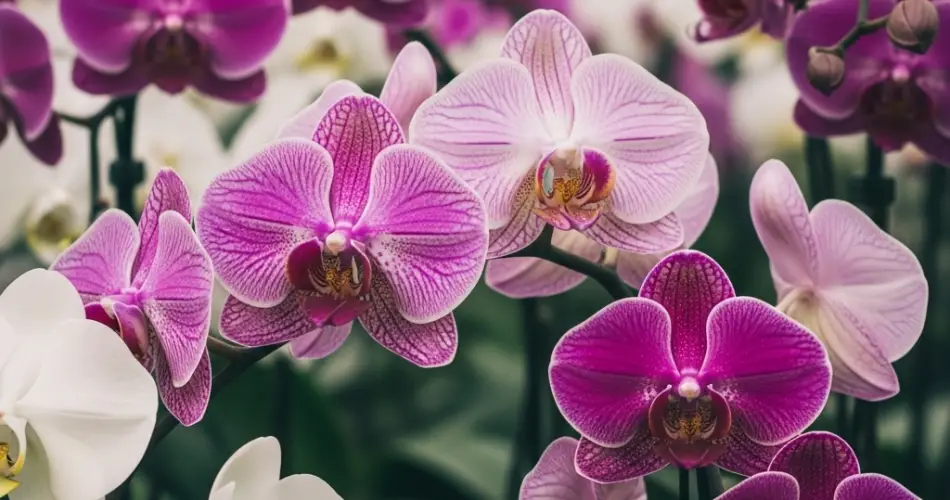Orchids are often admired for their elegant appearance and long-lasting blooms, but they’re also notorious for being misunderstood. While they may seem delicate or high-maintenance, many common issues with orchids stem from avoidable mistakes. By understanding their natural needs and avoiding these errors, you can help your orchid thrive and rebloom for years to come.
Here’s a guide to the most common orchid care mistakes and how to fix or prevent them.
1. Overwatering
Overwatering is the most frequent mistake orchid growers make. Orchids, especially the popular Phalaenopsis type, are epiphytes—plants that naturally grow on trees and have exposed roots that need air circulation.
What happens:
Too much water suffocates the roots, leading to rot, yellowing leaves, and a dying plant.
How to avoid it:
-
Water only when the potting medium is nearly dry—usually every 7–10 days.
-
Use a pot with drainage holes and avoid letting the plant sit in water.
-
Water early in the day so excess moisture can evaporate.
2. Using the Wrong Potting Mix
Orchids need a specialized growing medium that mimics their native environment. Regular potting soil retains too much water and doesn’t provide enough airflow to the roots.
What to use instead:
-
A well-draining orchid mix made of bark, perlite, charcoal, or coconut husk.
-
Repot every 1–2 years to refresh the medium and prevent compacting.
3. Improper Lighting
Insufficient or excessive light can hinder orchid growth and flowering. While orchids dislike direct midday sun, they also won’t bloom in low light conditions.
How to get it right:
-
Place orchids in bright, indirect light, such as near an east- or west-facing window.
-
If leaves are dark green, the orchid may need more light; if yellowish or reddish, it may be getting too much.
4. Wrong Temperature or Draft Exposure
Orchids prefer stable temperatures and humidity. Exposure to cold drafts, hot air from vents, or sudden temperature shifts can stress the plant.
Tips:
-
Maintain temperatures between 65–75°F (18–24°C) during the day and slightly cooler at night.
-
Keep orchids away from radiators, air conditioners, or open windows during extreme weather.
5. Neglecting Humidity Needs
Many orchids come from tropical environments and need higher humidity than typical indoor conditions provide.
Solutions:
-
Mist the leaves regularly or place a humidity tray under the pot.
-
Group orchids with other plants or use a small humidifier in dry environments.
-
Ideal humidity level is 50–70%.
6. Incorrect Fertilizing
Orchids are light feeders, and overfertilizing can do more harm than good. Salts from chemical fertilizers can accumulate in the medium and burn the roots.
Fertilizing the right way:
-
Use a balanced orchid fertilizer (like 20-20-20) diluted to half or quarter strength.
-
Feed once a month during the growing season (spring through early fall).
-
Rinse the potting mix occasionally to prevent salt buildup.
7. Ignoring Signs of Pests or Disease
Orchids can be vulnerable to pests like mealybugs, scale, spider mites, and fungal infections, especially in warm, humid conditions.
What to look for:
-
Sticky residue, cottony spots, webbing, or discolored patches on leaves.
-
Wilting, leaf spots, or sudden decline in health.
What to do:
-
Isolate infected plants.
-
Wipe leaves with a damp cloth or apply neem oil or insecticidal soap.
-
Improve airflow and reduce excess moisture to discourage fungus.
8. Improper Repotting
Many orchid growers fear repotting, but doing it too infrequently can smother roots in compacted or broken-down media.
How to repot successfully:
-
Repot every 12–24 months, especially when roots spill over the pot or the bark starts to break down.
-
Choose a pot only slightly larger than the current one.
-
Trim off any dead or mushy roots with sterile scissors.
9. Forcing Blooms Out of Season
Orchids need rest periods between blooming cycles. Trying to force reblooming without giving the plant a recovery phase often leads to weakened plants.
Encourage natural blooming by:
-
Letting the orchid rest after flowering—reduce watering slightly and stop fertilizing.
-
Provide a slight temperature drop at night (by 10–15°F) to help stimulate bud formation in many varieties.
10. Giving Up Too Soon
Perhaps the biggest mistake orchid owners make is assuming a dormant or resting orchid is dead. These plants have natural cycles, and it’s common for them to go weeks or months without blooming.
Stay patient:
-
If the leaves are healthy and roots are firm, the plant is still alive.
-
Continue basic care and wait for signs of new growth or flower spikes.
Final Thoughts
Orchids may have a reputation for being fussy, but with the right knowledge, they’re surprisingly resilient and rewarding. By avoiding common care mistakes and tuning into your plant’s specific needs, you can enjoy lush leaves, healthy roots, and regular blooms year after year.
Taking a thoughtful, observant approach to orchid care makes all the difference—turning frustration into long-term success.



